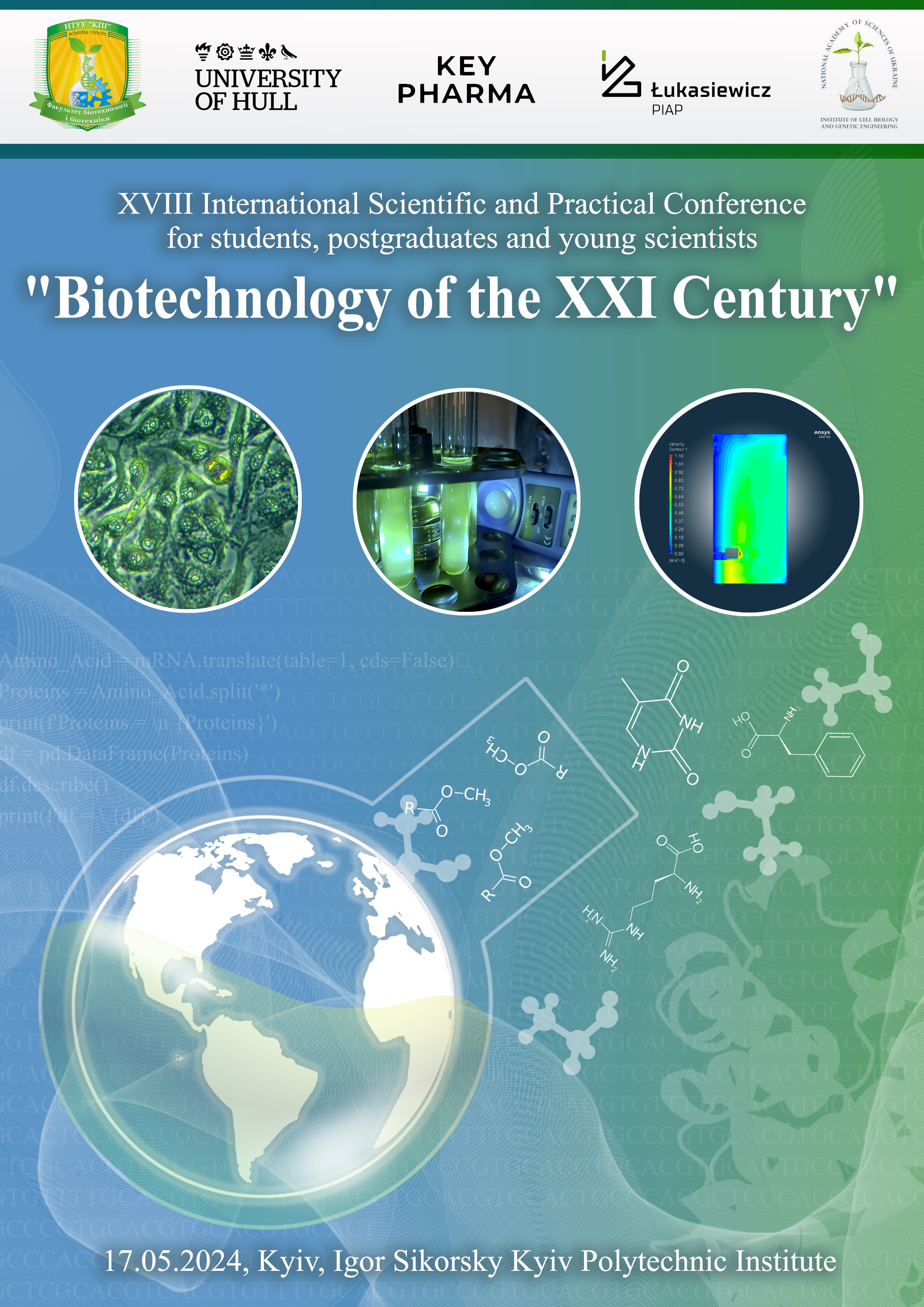МЕТОДИ ОТРИМАННЯ ЕКТРАЦЕЛЮЛЯРНОГО МАТРИКСУ ДЛЯ БІОІНЖЕНЕРІЇ НИРКИ
Ключові слова:
extracellular matrix (ECM), kidney, decellularization, scaffoldАнотація
The creation of a kidney organoid begins with the preparation of a three-dimensional substrate for further colonization with cells. The native architecture of the kidney matrix is difficult to create, so it was decided to isolate it from the organ by removing cells. Decellularization can occur through physical, chemical, biological agents, perfusion, or soaking and stirring.
Посилання
Decellularized tissue engineered constructs and tissues : patent US6962814B2 United States : A61L27/3839. Applied on 16.08.2001 ; published on 22.08.2002. 28 p. URL: https://patentimages.storage.googleapis.com/a8/08/58/8e2a9756c54fde/US6962814.pdf
Decellularization and Recellularization Technologies in Tissue Engineering / R.-H. Fu et al. Cell Transplantation. 2014. Vol. 23, no. 4-5. P. 621–630.
URL: https://doi.org/10.3727/096368914x678382
Gupta S. K., Mishra N. C., Dhasmana A. Decellularization Methods for Scaffold Fabrication. Methods in Molecular Biology. New York, NY, 2017. P. 1–10.
URL: https://doi.org/10.1007/7651_2017_34
Keane T. J., Swinehart I. T., Badylak S. F. Methods of tissue decellularization used for preparation of biologic scaffolds and in vivo relevance. Methods. 2015. Vol. 84. P. 25–34.
URL: https://doi.org/10.1016/j.ymeth.2015.03.005
Gilbert T., Sellaro T., Badylak S. Decellularization of tissues and organs. Biomaterials. 2006. URL: https://doi.org/10.1016/j.biomaterials.2006.02.014
Kabirian F., Mozafari M. Decellularized ECM-derived bioinks: Prospects for the future. Methods. 2020. Vol. 171. P. 108–118. URL: https://doi.org/10.1016/j.ymeth.2019.04.019
Tissue-Engineered Grafts from Human Decellularized Extracellular Matrices: A Systematic Review and Future Perspectives / A. Porzionato et al. International Journal of Molecular Sciences. 2018. Vol. 19, no. 12. P. 4117. URL: https://doi.org/10.3390/ijms19124117
Destefani A. C., Sirtoli G. M., Nogueira B. V. Advances in the Knowledge about Kidney Decellularization and Repopulation. Frontiers in Bioengineering and Biotechnology. 2017. Vol. 5. URL: https://doi.org/10.3389/fbioe.2017.00034
Decellularization with triton X-100 provides a suitable model for human kidney bioengineering using human mesenchymal stem cells / S. Shahraki et al. Life Sciences. 2022. Vol. 295. P. 120167. URL: https://doi.org/10.1016/j.lfs.2021.120167
Decellularized extracellular matrix biomaterials for regenerative therapies: Advances, challenges and clinical prospects / A. A. Golebiowska et al. Bioactive Materials. 2024. Vol. 32. P. 98–123. URL: https://doi.org/10.1016/j.bioactmat.2023.09.017
Embryonic Stem Cells Proliferate and Differentiate when Seeded into Kidney Scaffolds / E. A. Ross et al. Journal of the American Society of Nephrology. 2009. Vol. 20, no. 11. P. 2338–2347. URL: https://doi.org/10.1681/asn.2008111196
Decellularization methods of porcine kidneys for whole organ engineering using a high-throughput system / D. C. Sullivan et al. Biomaterials. 2012. Vol. 33, no. 31. P. 7756–7764. URL: https://doi.org/10.1016/j.biomaterials.2012.07.023
Kular J. K., Basu S., Sharma R. I. The extracellular matrix: Structure, composition, age-related differences, tools for analysis and applications for tissue engineering. Journal of Tissue Engineering. 2014. Vol. 5. P. 204173141455711. URL: https://doi.org/10.1177/2041731414557112
Decellularization of porcine kidney with submicellar concentrations of SDS results in the improved retention of ECM proteins required for the adhesion and maintenance of human adult renal epithelial cells. / T. Bongolan et al. Biomaterials Science. 2022.
URL: https://doi.org/10.1039/d1bm01017d
Epithelial Cell Repopulation and Preparation of Rodent Extracellular Matrix Scaffolds for Renal Tissue Development / J. S. Uzarski et al. Journal of Visualized Experiments. 2015. No. 102.
URL: https://doi.org/10.3791/53271
Londono R., Badylak S. F. Biologic Scaffolds for Regenerative Medicine: Mechanisms of In vivo Remodeling. Annals of Biomedical Engineering. 2014. Vol. 43, no. 3. P. 577–592. URL: https://doi.org/10.1007/s10439-014-1103-8

